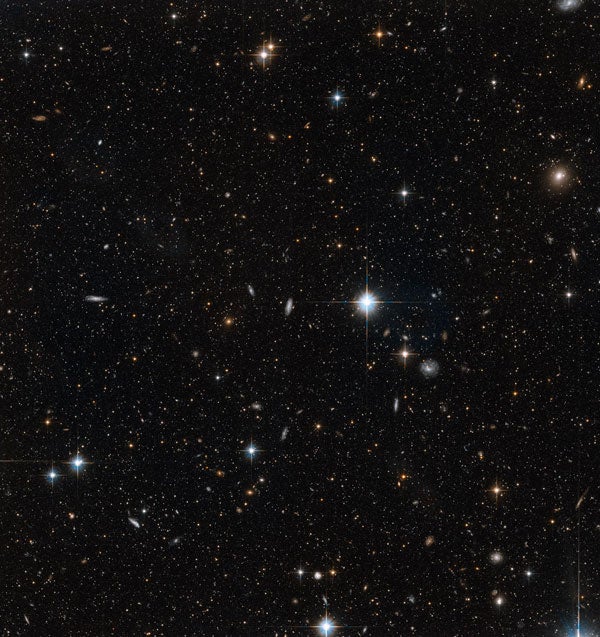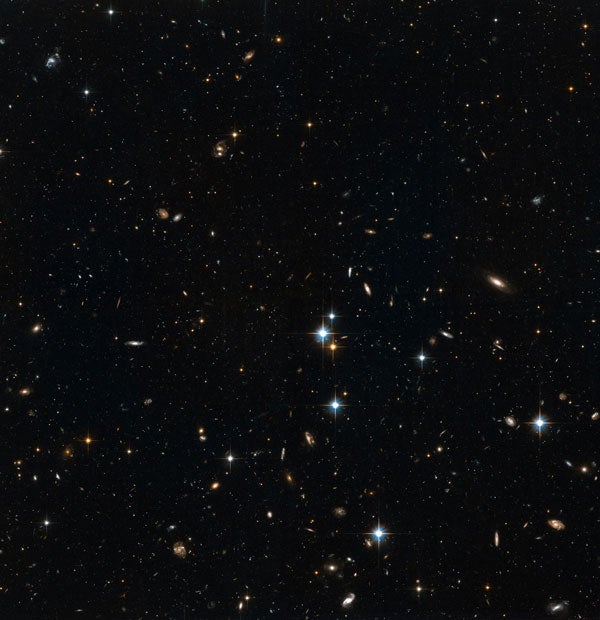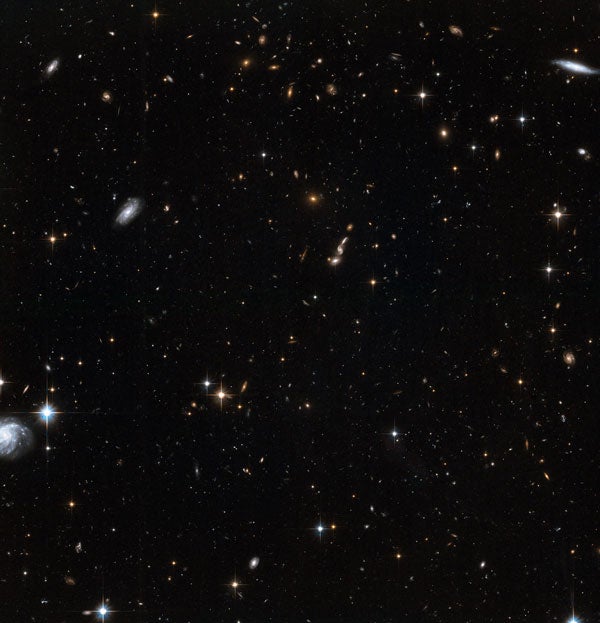These four observations made by Hubble’s Advanced Camera for Surveys give a close-up view of the Andromeda Galaxy (M31). Observations of most galaxies do not show the individual stars — even the most powerful telescopes cannot normally resolve the cloudy white shapes into their hundreds of millions of constituent suns.
The resulting images offer a different perspective on a spiral galaxy. Far from being an opaque, dense object, Hubble reminds us that the dominant feature of a galaxy is the huge voids between its stars. Thus, these images do not only show stars in the Andromeda Galaxy (and a handful of bright Milky Way stars that are in the foreground), but they also let us see right through the galaxy, revealing far more distant galaxies in the background.
The four images in this release look superficially similar, but on closer inspection they reveal some important differences.
Meanwhile, the images of stars in the Andromeda Galaxy’s disk and a region known as the giant stellar stream show stars far more densely packed, largely outshining the background galaxies. The galaxy’s disk includes the distinctive spiral arms, as well as dimmer and less numerous stars in the gaps between them, while the stream is a large structure that extends out from the disk, and it is probably a remnant of a smaller galaxy that was absorbed by the Andromeda Galaxy in the past.
The purpose of these observations also explains their exceptional depth — to gain useful data on dim, distant stars, a long series of individual exposures had to be made in each field. Together they combine to make images with a long exposure time. This has the side effect of also revealing the faint background galaxies, which would otherwise have been invisible.













